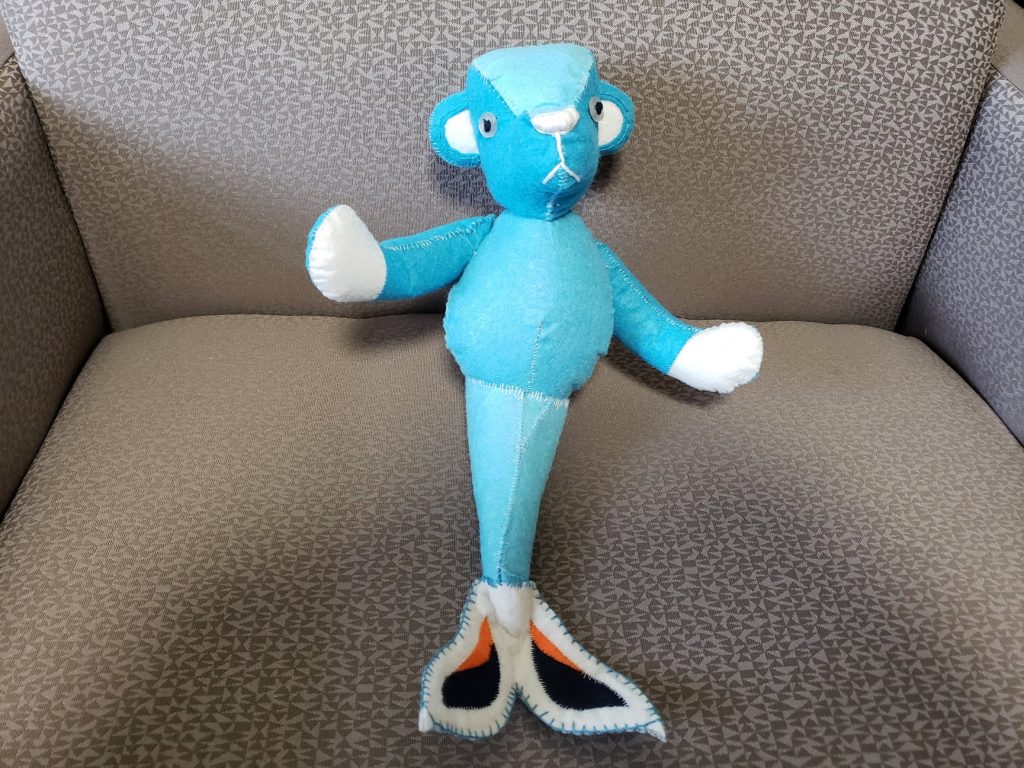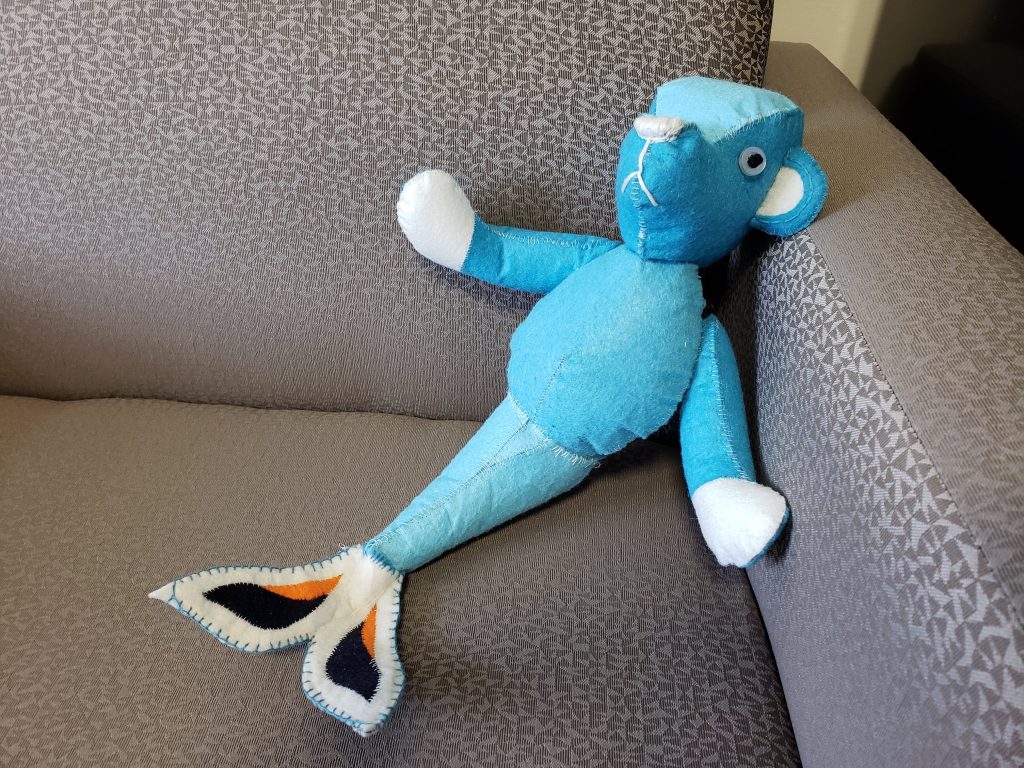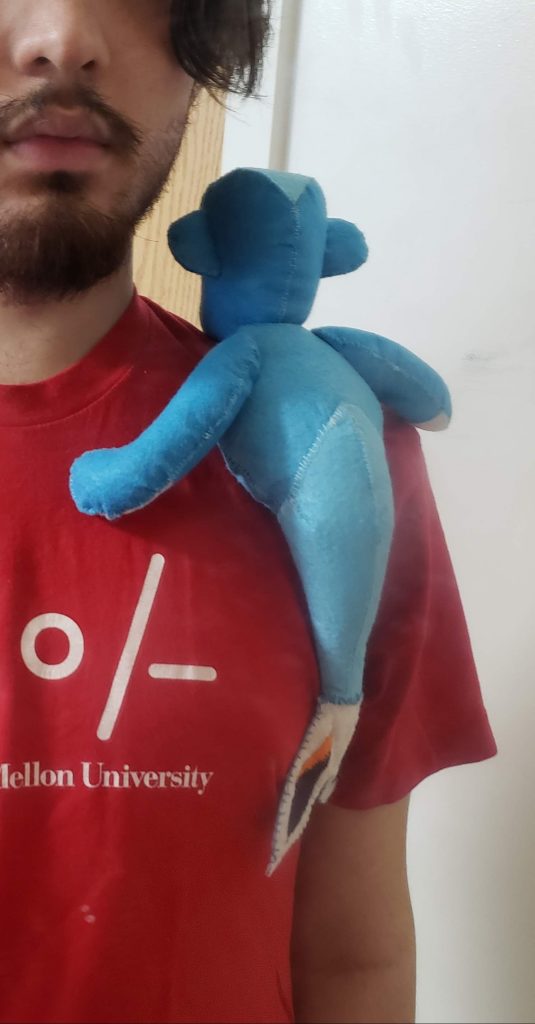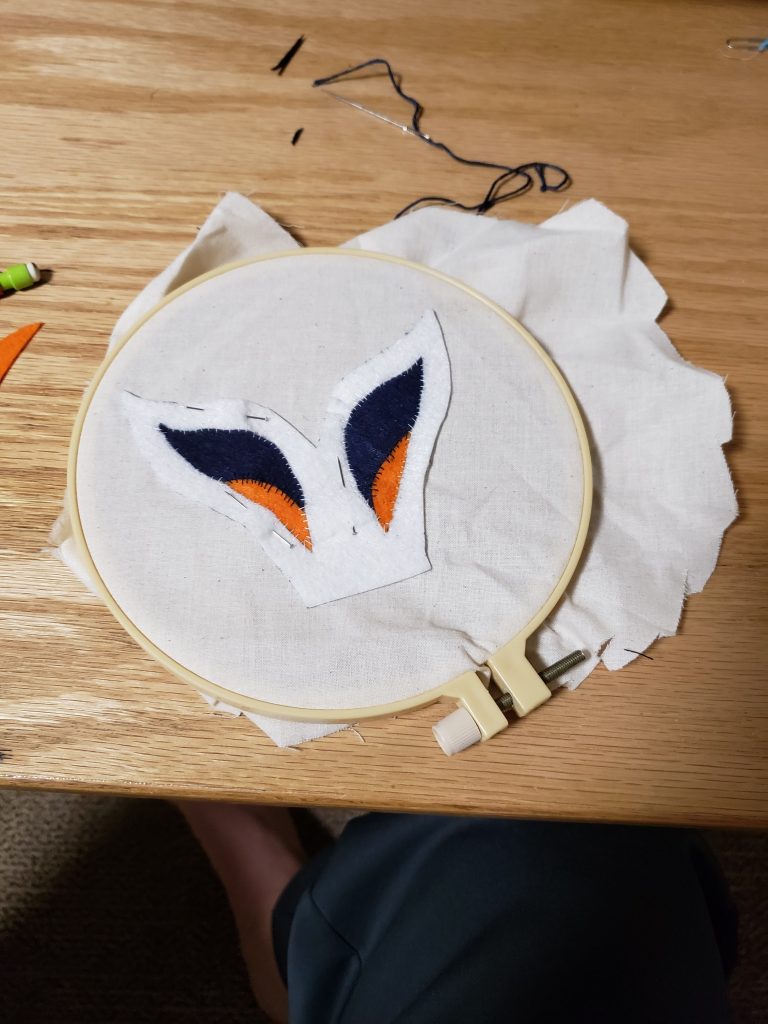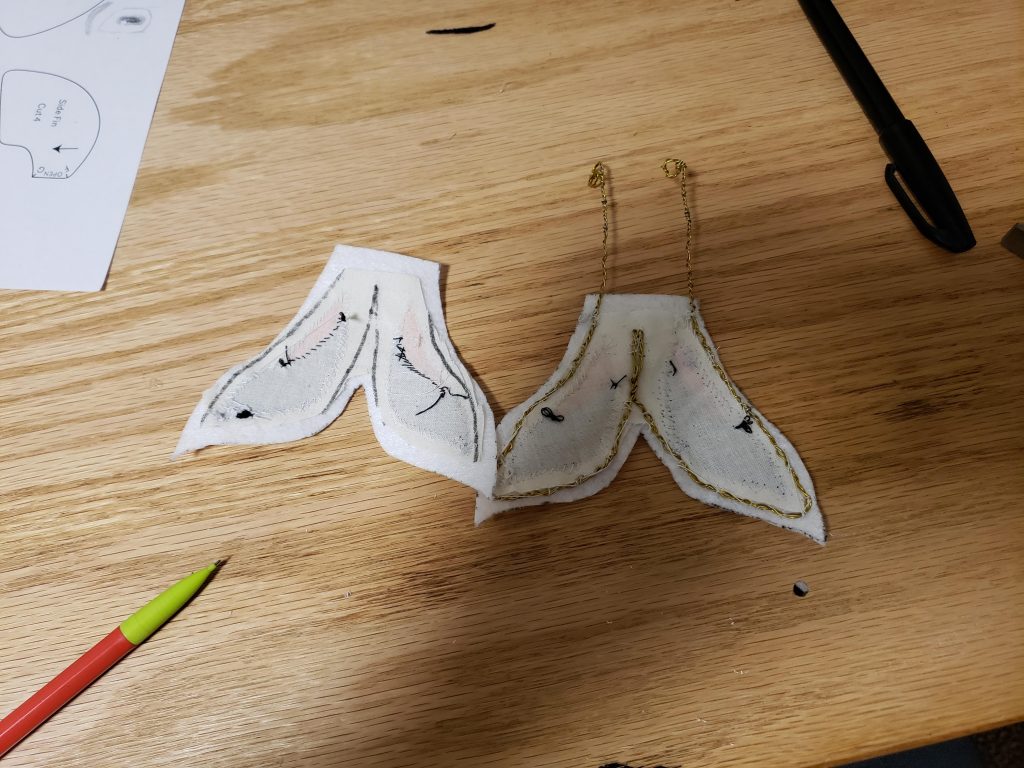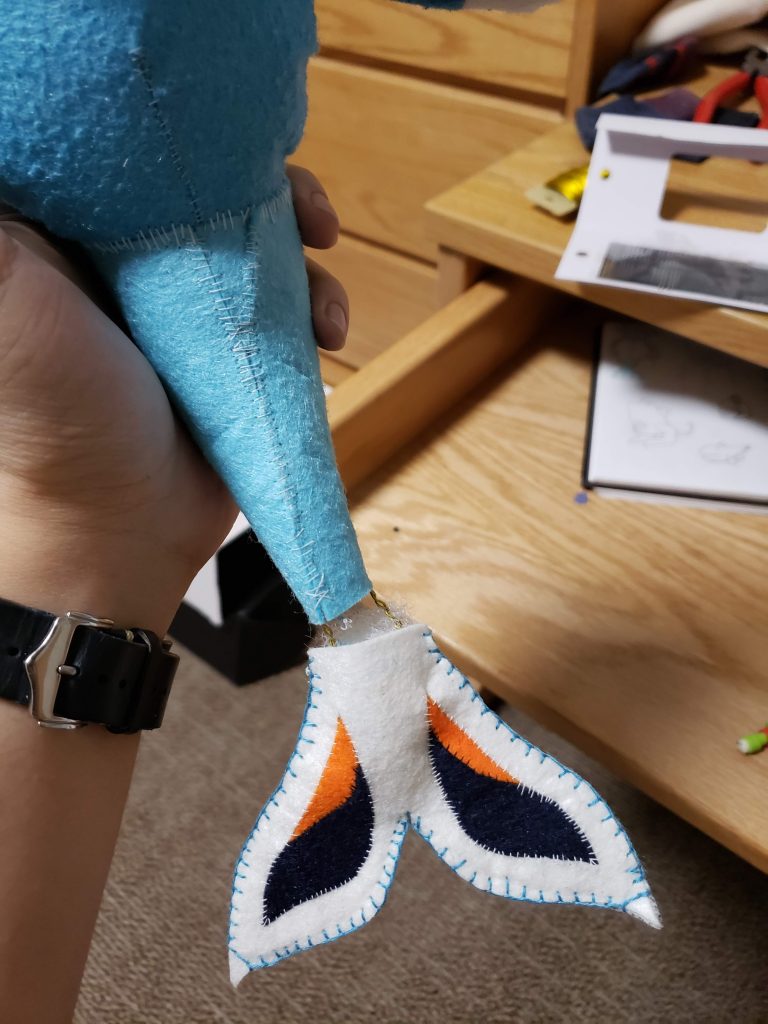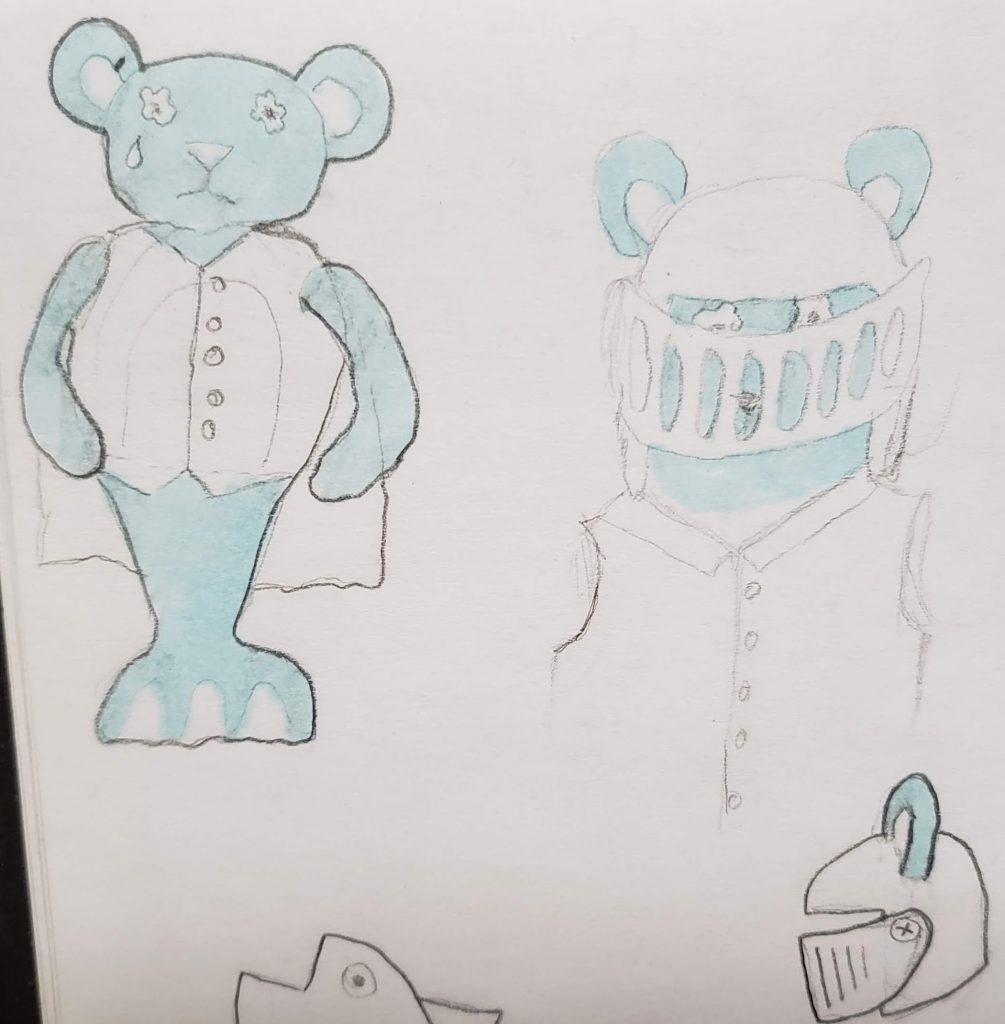Protector/Companion – Kevin Thies
My companion is Sadbear. Sadbear is a mix of a bear and a fish, and while such mash-ups usually create elegant mermaids, a mermaid Sadbear is not. It belongs to neither land nor sea, the fish tail offering no mobility out of water, and the top-heavy bear is unsuited to life underwater. Sadbear is lonely, having nowhere to belong, and he readily seeks companionship or any sort of connection. Sadbear is to be protected, and in uncertain times, the act of protecting another can be a point of stability for both Sadbear and the protector.
Making Sadbear offered up new challenges compared to our other projects. First of all, it’s completely felt, and the edge-stitching without seam allowance was certainly different compared to working with woven fabrics, but my improvement can definitely be seen in the stitches. I found that felt allowed for really small and close stitches that had a very handmade yet almost antique quality, and I embraced some of that aesthetic with the satin-stitch nose and using buttons for eyes.
Combining the patterns for the bear and fish was also interesting, as they ended up meeting in a way that’s unintuitive on the paper patterns, and so I ended up completing the bear part and then measuring and adapting a mostly-sewn fish tail, which keeps a lot of of the process physical and in-the-moment, and was likely in part due to my comfort in patterning and adapting on the fly.
The biggest time-sink of all was the tail. I think at least eight hours were spent on that tail alone, and while a lot was spent in the intersection of the two beasts, it ended up being mostly the tail fin. I wanted to add a wire so it would be slightly poseable, which meant it had to have two layers, and I kept the stitching as small as I could get it, but to reinforce those small details, I backed both sides with muslin. to keep the fin tight on the wire, I tacked the wire in place on the back side of the fin, and then once both halves were attached, I went over the wire with more stitches to make sure it was held down. What helped was that the wire was hand-twisted from smaller wire, so I was able to have gaps that I could run a needle and thread through the center, which just added extra stability so that it wouldn’t shift longitudinally.
In the end, I’m happy with how Sadbear turned out, and while it was a whole lot of hand sewing, it goes back to one of my reasons for taking the class, in that I wanted to improve my sewing skills. While we didn’t do much with big inflatables and sewing machines in this project, I’ve certainly been able to improve my hand sewing to be something I can depend on.
